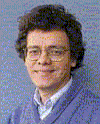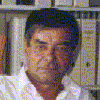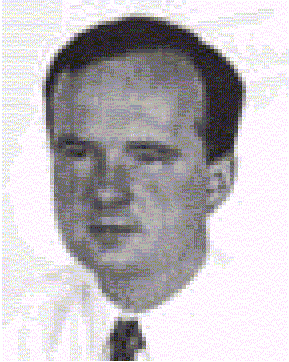
Efficient Hierarchical Video Indexing and Retrieval

Time Series Prediction with Wavelet Neural Networks

Shape-Adaptive Transforms for Image Coding, an Overview
VIPromCom-2001
INVITED SPEAKERS
(click
on the link for details)
Efficient Hierarchical Video Indexing and Retrieval
Dr. Ebroul Izquierdo
Department
of Electronic Engineering
Queen Mary University of London
UNITED KINGDOM
Abstract:
An efficient hierarchical technique for content-based image annotation and retrieval is presented. A family of successively simplified image features is defined using colour histograms and texture filters. The image colour distribution is quantisized according to a scale-parameter obtained by convolving the image colour distribution function with Gaussians of increasing size. The generated family of histograms is then used to define descriptors at various levels of detail. Using the hierarchical descriptor structure irrelevant details and noise are removed in a very early processing step. Large sets of non-similar images are discriminated at very low computational cost using low detailed descriptions. The search is then refined progressively until only a few of very similar objects or images are found and ranked using higher levels of detail. The proposed approach uses both local and global image information to capture spatial image properties. Additionally, it allows content-based search and adaptively weighted relevance feed-back.
About the Invited Speaker:
Dr Ebroul Izquierdo is a Lecturer in the Department of Electronic Engineering, Queen Mary University of London. He received the MSc and PhD from the Humboldt University, Berlin Germany in 1989 and 1993, respectively. After graduation Dr Izquierdo joined the Heinrich-Hertz Institute for Communication Technology (HHI), Berlin, Germany, where he worked from 1993 to 1997. In 1998 he joined the electronic systems engineering department of the University of Essex as a senior research officer. Dr Izquierdo started his academic career as a lecturer in April 2000. He is known for his works on video processing, stereo imaging, cataloguing and retrieval of multimedia documents and techniques for interactive multimedia applications. He has published more than 60 technical papers including chapters in books. He is a corporate member of IEE, a member of IEEE and a member of the European COST211ter group.
Time Series Prediction with Wavelet Neural Networks
Professor Paul Cristea
"Politehnica"
University of Bucharest
Department of Engineering Sciences, EE&CS Division
ROMANIA
Abstract:
Massive parallelism, distribution of computation among similar quite simple processing elements, and the ability to learn from examples and to self-adapt make Neural Networks well suited for tackling complex real-life problems. Wavelet transform concentrates the energy of "natural" signals and images - described by piece-wise smooth functions, with sharp transitions between neighbouring domains - in fewer de-correlated samples, being the best choice for applications like signal compression, denoising, restoration, enhancing, feature extraction, and time series prediction. The paper presents the application to time series prediction of the Wavelet Neural Networks, building on the advantages of both neural networks and wavelets. Standard backpropagation -- applied to an ANN with a priorly chosen structure, and evolutionary training -- implying the use of a ANN population, and allowing the adaptation of both structure and parameters have been considered.
About the Invited Speaker:
Professor Paul Cristea, born in Bucharest, Romania, 1941, graduated the Faculty of Electronics and Telecommunications (PUB-"Politehnica" University of Bucharest, 1962) and the Faculty of Physics (University of Bucharest, 1969). He obtained the Ph.D. in Technical Physics (PUB, 1970). His research and teaching activities are in the fields of Digital Signal and Image Processing, Neural Networks, Evolutionary Intelligent Agents, Computerized Medical Equipment, Advanced Electrical Batteries, and Circuit Theory. Professor Cristea is the author or co-author of more then 140 published papers, 11 patents, and has contributed to 23 books in these fields. Currently he is director of studies at the Department of Engineering Sciences of PUB and general director of the Bio-Medical Engineering Center of PUB.
Shape-Adaptive Transforms for Image Coding, an Overview
Professor Ryszard Stasinski
Institute
of Electronics and Telecommunications
Poznan University of Technology
POLAND
Abstract:
In the emerging Internet and multimedia applications images are often interpreted as collections of objects, or shapes. That is why region-based approaches to image and video compression are actively explored today. In such approaches one of the essential problems is the representation of luminance and color in arbitrarily-shaped regions. For rectangular blocks from natural images the discrete cosine transform (DCT) has been found to perform close to the theoretically the best Karhunen-Loeve transform (KLT), and indeed, derivations of practically all proposed shape-adaptive transforms use DCT basis functions, or algorithms as starting points. Most of the methods proposed to date can be divided into two classes. The first class comprises methods that exploit standard transforms defined on a rectangular support, such as the 2-D DCT. The other class of methods limits the basis functions of a transform to region's shape. Initially, the first class contained method that were fast but suboptimal, while the other one slower, high precision techniques, but new results have blurred this clear-cut image. In the paper an overview of the shape-adaptive transforms is done. The overview starts with techniques from the first class: some simple but low-quality methods are described, then, more complex techniques like POCS are introduced. The second class contains top-quality techniques like the Gilge method, SA DCT – probably the most important one, finally, fast methods based on transformed DCT algorithms. The paper provides also a comparison of methods done for an exemplary irregular image shape.
About the Invited Speaker:
Professor Ryszard Stasinski received the M.Eng. and Ph.D. degrees from the Technical University of Poznan, Poland, in 1977 and 1985, respectively. He has been an Associate Professor in the Department of Electrical Engineering since 1985. In 1992–1994 he was a post-doctoral fellow at the Norwegian Institute of Technology and in 1996 he was a visiting scientist at INRS Telecommunications, Montreal, Canada. He was on a leave at Hogskolen i Narvik, Norway. Currently, he is working at Poznan University of Technology, Poznan, Poland. Professor Stasinski is the author of over 50 papers published in international journals and international conference proceedings. His research interests include theory and application of fast algorithms, including algorithms for image coding.